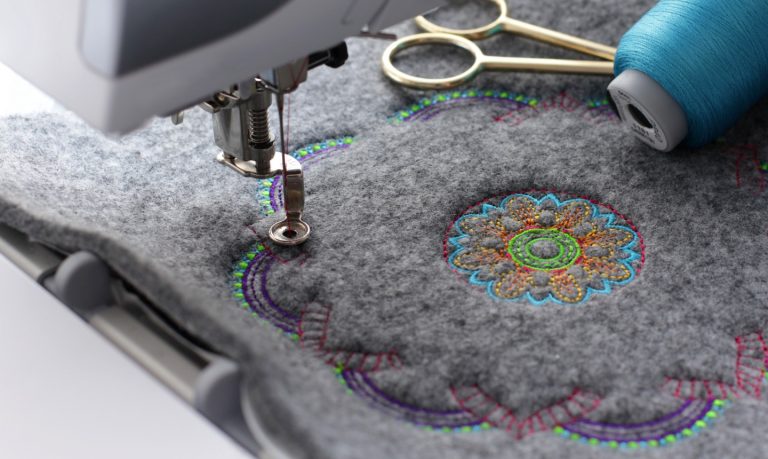Customized Digitizing for Embroidery: Customized to Your Requirements
Customized Digitizing for Embroidery: Customized to Your Requirements
Blog Article
Mastering the Needlework Digitizing Process: Your Ultimate Overview
Needlework digitizing is a thorough craft that calls for accuracy and knowledge to convert complex layouts right into digital styles for device needlework. As craftsmens start this trip to master the needlework digitizing procedure, a detailed understanding of the essentials establishes the foundation for excellence. Past the fundamental expertise exists a realm of innovative software program, specialized tools, and nuanced strategies waiting to be discovered. By delving right into the subtleties of digitizing, one can open a globe of imaginative opportunities and elevate their needlework tasks to brand-new elevations.

Comprehending Embroidery Digitizing Basics
Embroidery digitizing basics form the foundation upon which elaborate layouts are translated into machine-readable layouts for accurate sewing. This initial action in the needlework digitizing process is critical for ensuring that the last stitched product is a faithful depiction of the initial layout. Recognizing embroidery digitizing essentials involves grasping essential concepts such as stitch types, stitch instructions, thickness, rug, and pull payment.
Stitch types play an essential role in figuring out the visual and textural end result of the embroidered design. By picking the proper stitch kind, whether it be satin, fill, or running stitch, digitizers can attain the desired result and boost the total high quality of the embroidery. In addition, sew direction influences the flow and dimension of the style, while thickness figures out the spacing and insurance coverage of the stitches.
Furthermore, rug stitching gives stability to the design by safeguarding the fabric and stopping distortion throughout the needlework process. Draw payment is another necessary consideration to neutralize the natural propensity of material to contract when sewn. Grasping these needlework digitizing basics is fundamental for creating professional-quality embroidered items.
Selecting the Right Digitizing Software
Choosing the proper digitizing software is a vital choice that significantly impacts the effectiveness and high quality of the embroidery digitizing process. Digitizing for Embroidery. When picking the best digitizing software, it is necessary to consider factors such as the intricacy of designs you intend to produce, the user-friendliness of the software application, the degree of client support used, and the compatibility with your embroidery equipment
There are different digitizing software program options readily available out there, ranging from standard programs for beginners to innovative software for expert digitizers. Some popular choices consist of Wilcom EmbroideryStudio, Hatch Embroidery Software Program, and PulseID. These software supply a large range of devices and features to aid you develop intricate layouts effortlessly.
Prior to deciding, it is suggested to check out the different software application choices via free tests or trials to determine which one best matches your needs. Furthermore, reading testimonials and looking for recommendations from experienced digitizers can provide valuable insights right into the staminas and weak points of each software plan (Digitizing for Embroidery). great site By very carefully assessing your demands and comparing the attributes of various digitizing software application, you can make an informed choice that enhances your needlework digitizing operations
Digitizing Tools and Strategies

Optimizing Layout Setup for Embroidery
Mastering the complexities of design setups is fundamental in achieving optimum results in the embroidery digitizing process, building upon the structure laid by comprehending digitizing tools and techniques. When maximizing style setups for embroidery, it is crucial to think about variables such as stitch kind, thickness, rug, draw compensation, and enrollment. Registration settings align different elements of the layout accurately, keeping general design stability.

Troubleshooting Common Digitizing Issues
When experiencing usual digitizing problems during the needlework process, it is vital to comprehend the root triggers and carry out effective services promptly. One usual issue is stitch density problems, where stitches may be also thick, creating the fabric to pucker, or as well thin, resulting in voids in the design. Adjusting the stitch thickness setups in the digitizing software application can aid fix this concern.
One more frequent difficulty is thread breaks during the embroidery process. This can occur as a result of numerous factors such as incorrect tension setups, dull needles, or making use of low-quality string. Ensuring correct upkeep of the needlework maker, consisting of routine needle adjustments and tension changes, can minimize the occurrence of string breaks.
Furthermore, style enrollment errors can result in misaligned elements within the needlework style. Checking the layout alignment in the digitizing software program and making needed adjustments before sewing can aid in avoiding this concern. By dealing with these typical digitizing issues promptly and properly, you can make certain a smoother needlework procedure and high-grade completed products.
Verdict
In verdict, grasping the embroidery digitizing procedure requires a strong understanding of the essentials, the ideal selection of software program, and understanding of devices and strategies. Maximizing design settings and fixing usual digitizing problems are critical steps in making sure high-grade needlework outcomes. By following these actions vigilantly, one can achieve precision and efficiency in the digitizing process.
Report this page